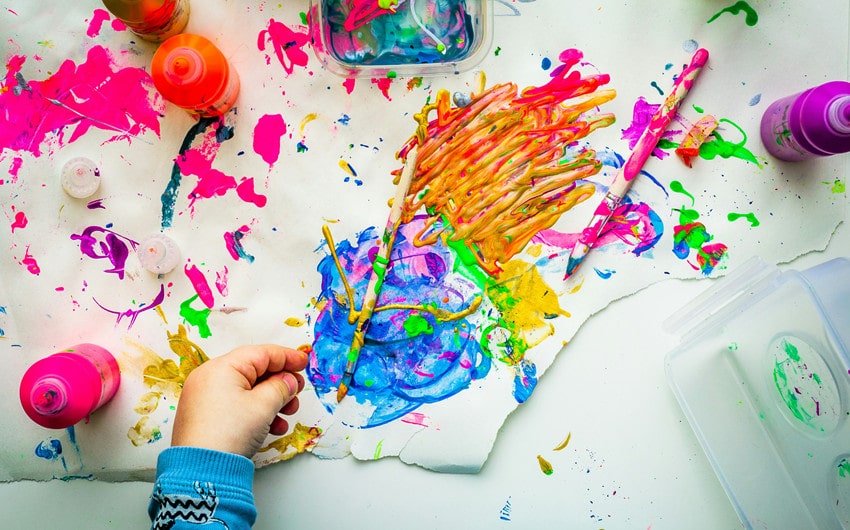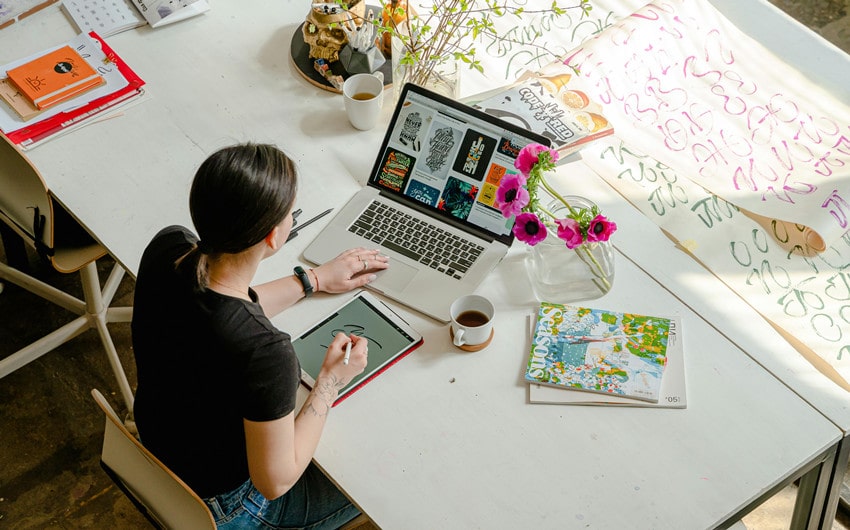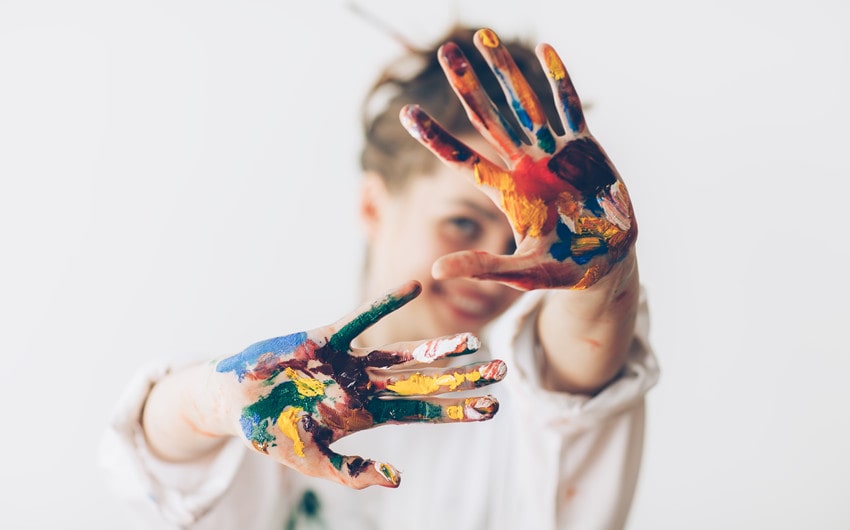Why True Creativity Is Often Messy: Embrace the Chaos Within
Ever started a project with a clear plan, only to find yourself surrounded by scattered notes, half-formed ideas, and sudden detours? It might feel frustrating—but that’s often where the magic happens. In real life, creativity rarely shows up in neat lines or perfect outlines.
It twists, turns, and sometimes gets downright messy. That’s exactly what we’re diving into here: why true creativity is often messy. Because behind the clutter and chaos, there’s often something honest, original, and totally worth discovering.
The Nature of the Creative Process

Creativity isn’t a straight path—it’s more like a winding trail with unexpected turns, dead ends, and surprise discoveries. You start with one idea, then something shifts. Maybe an offhand comment sparks a new thought, or a mistake leads you somewhere better than you planned. This is all part of the process.
True creativity thrives on exploration. That means trying things that might not work, layering ideas, making a mess, and sorting through it later. Whether you’re painting, writing, designing, or brainstorming solutions at work, the process is often disorganized at first—and that’s not a problem. It’s how the mind experiments, plays, and pushes past the obvious.
Messiness in the creative process reflects movement. It shows you’re thinking beyond the surface and not just following a fixed formula. It’s not about making things chaotic for no reason—it’s about giving your ideas the room to evolve before trying to refine or polish them.
The Psychology Behind Messiness and Creativity
There’s actually science behind the connection between messiness and creativity. Psychologists have found that environments with a bit of disorder can help spark original thinking. One study from the University of Minnesota showed that participants in a messy room were more likely to come up with creative, unconventional solutions than those in a tidy space.
That’s because creativity often relies on divergent thinking—the ability to see multiple possibilities and make unusual connections. A neat, controlled setting might feel good, but it can subtly encourage conventional thinking and routine behavior. On the other hand, a slightly chaotic space can tell the brain it’s okay to think freely, break rules, and try something new.
It’s also tied to how our brains process information. Creative minds often juggle multiple ideas at once, leading to what looks like disorder on the outside. But inside, the brain is making associations, rearranging concepts, and testing ideas—all of which can look messy in practice, even if it’s deeply purposeful underneath.
Common Myths About Order and Productivity

When it comes to getting things done, we’re surrounded by messages that tell us order equals success. Neat desks, color-coded planners, and perfectly curated workflows are often seen as the gold standard. But creativity doesn’t always fit into that mold. Let’s break down a few myths that can hold creative minds back.
Myth 1: A Clean Space Equals a Clear Mind
We’ve all heard it—“tidy space, tidy mind.” While that can be true for some, it’s not a universal rule. In creative work, a cluttered space can actually reflect a rich inner world. Your desk covered in papers, sketches, and half-finished ideas isn’t necessarily a sign of distraction—it might be a sign you’re in flow.
Some of the most innovative people work in spaces that look chaotic to others. It’s not about mess for mess’s sake, but about creating an environment where inspiration has room to roam freely.
Myth 2: Productivity Requires Strict Structure
Rigid systems might work well for task-based jobs, but creativity often needs wiggle room. If you try to box your ideas into a rigid schedule or overly structured process too soon, you risk cutting off ideas before they’ve had a chance to grow.
Productivity in creative work is often cyclical, unpredictable, and fluid. Some days are about rapid idea generation. Others are about reflection or quiet progress. It doesn’t always follow a straight line—and that’s okay.
Myth 3: Disorganization Means You’re Not Serious
There’s a harmful assumption that if you’re not meticulously organized, you must not care enough. In reality, many highly dedicated and talented creatives work in ways that don’t look traditionally productive. They follow intuition, jump between ideas, and build in layers—and that can look messy from the outside.
Creativity isn’t about appearance. It’s about depth, connection, and expression. A scattered approach doesn’t mean a lack of discipline—it can mean you’re working on a deeper, more instinctive level that doesn’t show itself through neat folders or perfect checklists.
Myth 4: You Should Clean Up Before You Start
Some people think they need to have everything perfectly set up before they begin a creative task—an organized desk, the right tools, a clear mind. But waiting for perfect conditions often becomes a way to procrastinate. The truth is, many great ideas come when things are not ready, and you just dive in anyway.
Creativity isn’t about waiting for the right moment—it’s about showing up in the mess and making something anyway.
Why Embracing the Mess Can Lead to Better Ideas
Trying to keep everything clean and perfect from the start can actually hold you back creatively. When you’re too focused on keeping things in order, you might hesitate to try new ideas or fear “messing things up.” That fear of making mistakes or creating chaos can block the natural flow of imagination.
On the other hand, when you embrace the mess—whether it’s a pile of rough sketches, scattered brainstorms, or a half-finished project—you give yourself permission to explore freely. You stop worrying about how things look and start focusing on what feels exciting, strange, or intriguing. That’s where the really good ideas often hide.
Being comfortable with disorder allows you to take creative risks without overthinking. It helps you move past the pressure to be perfect, which is often the biggest enemy of innovation. You might come up with ten bad ideas before one good one emerges—but that’s the process. The mess is where breakthroughs are born.
Creativity isn’t about getting it right the first time—it’s about staying open, playful, and brave enough to dive into uncertainty. And more often than not, that means letting things get a little messy along the way.
How to Navigate the Mess Constructively

While messiness can be a natural and even helpful part of the creative process, too much chaos can leave you feeling stuck or overwhelmed. The key isn’t to eliminate the mess—it’s to work with it. Here’s how to embrace the creative disorder while still making progress and staying grounded.
1. Separate the Thinking and the Organizing Stages
Trying to organize while you’re coming up with ideas is like editing a sentence before you finish writing it. It interrupts the flow. Instead, let the ideas spill out freely—on paper, on a whiteboard, or across sticky notes—without worrying about structure. Once you’ve gathered your raw material, then start shaping it into something coherent.
Think of it like sculpting: first you gather the clay, then you mold it.
2. Use Tools That Support Flexible Thinking
Not all creative tools have to be digital or sleek. Sometimes, a messy sketchpad, a mind map, or a collection of index cards can give your ideas the breathing room they need. These tools let you shift, rearrange, and layer thoughts without locking you into one path too early.
Apps like Notion, Miro, or Trello can also help bridge the gap between creative mess and organization by letting you freely brainstorm and later organize ideas when you’re ready.
3. Create “Controlled Chaos” Zones
Instead of trying to keep everything neat, designate certain areas for creative mess—like a corkboard for wild ideas, a notebook for unfiltered thoughts, or a corner of your desk where work-in-progress can pile up. This gives the mess a place to live, so it doesn’t take over your entire workspace or mind.
This strategy also helps you return to unfinished thoughts later, instead of losing them in the shuffle.
4. Take Breaks to Regain Perspective
When your creative environment feels overwhelming, stepping away—even briefly—can help you return with clarity. A short walk, a different task, or even a moment of quiet can give your brain the space it needs to make sense of the mess subconsciously.
Often, the solution you’re looking for will come together when you least expect it.
5. Trust That Order Will Come Later
In creative work, clarity often comes after the exploration, not before. Let yourself get messy in the beginning stages, knowing that you’ll refine, cut, and structure later. Just because it feels chaotic now doesn’t mean it won’t come together beautifully in the end.
Trust the process. The mess is part of it.






